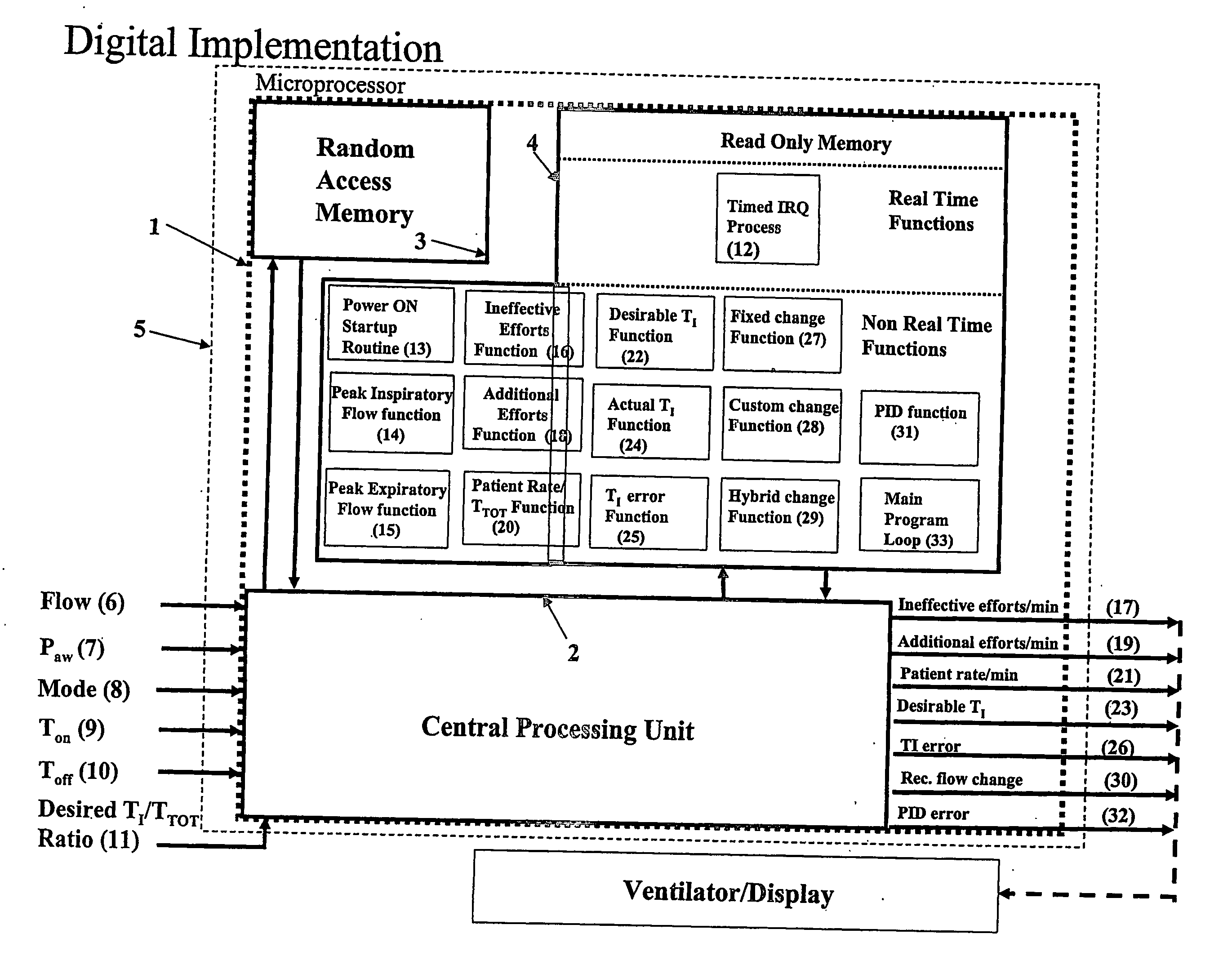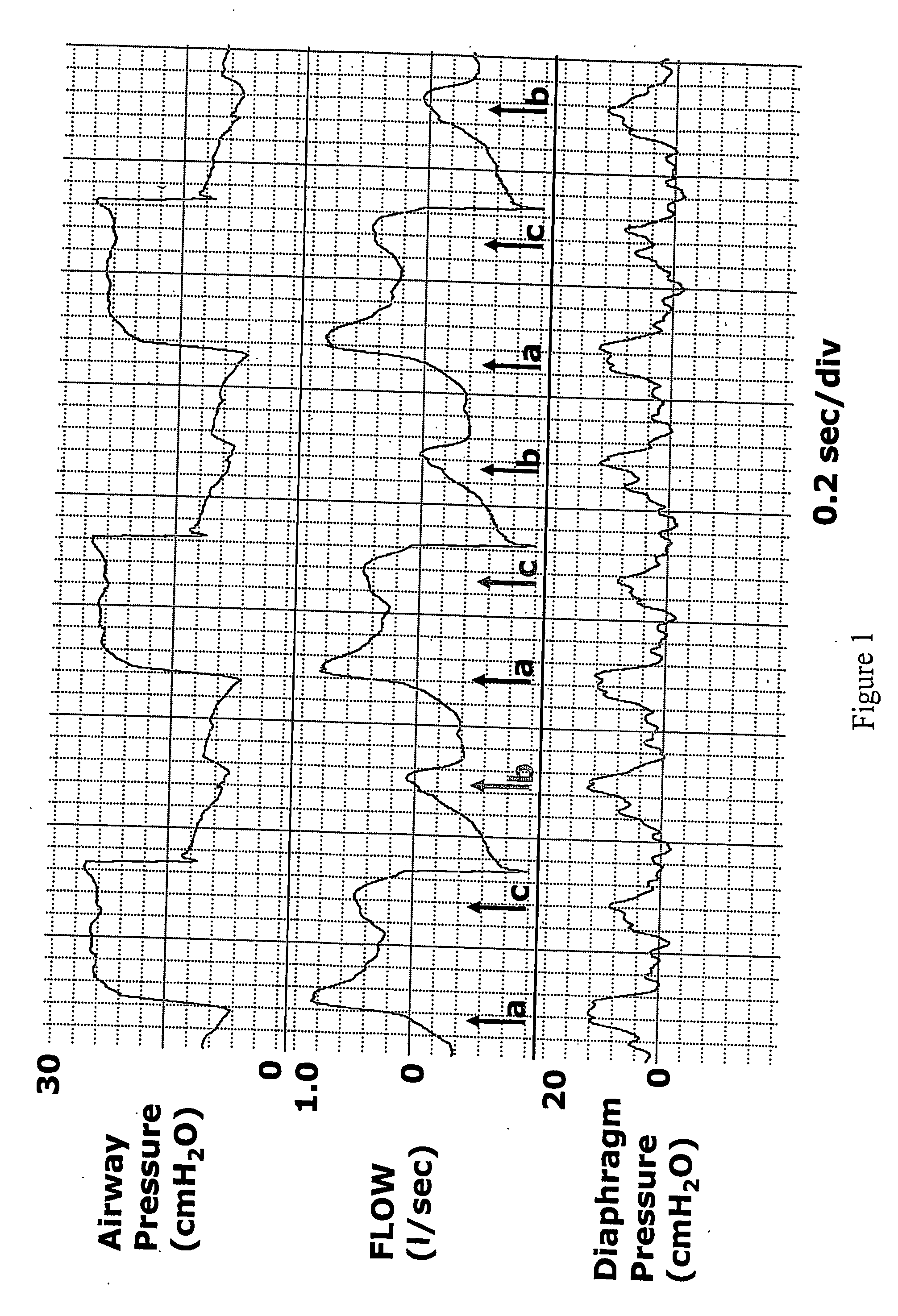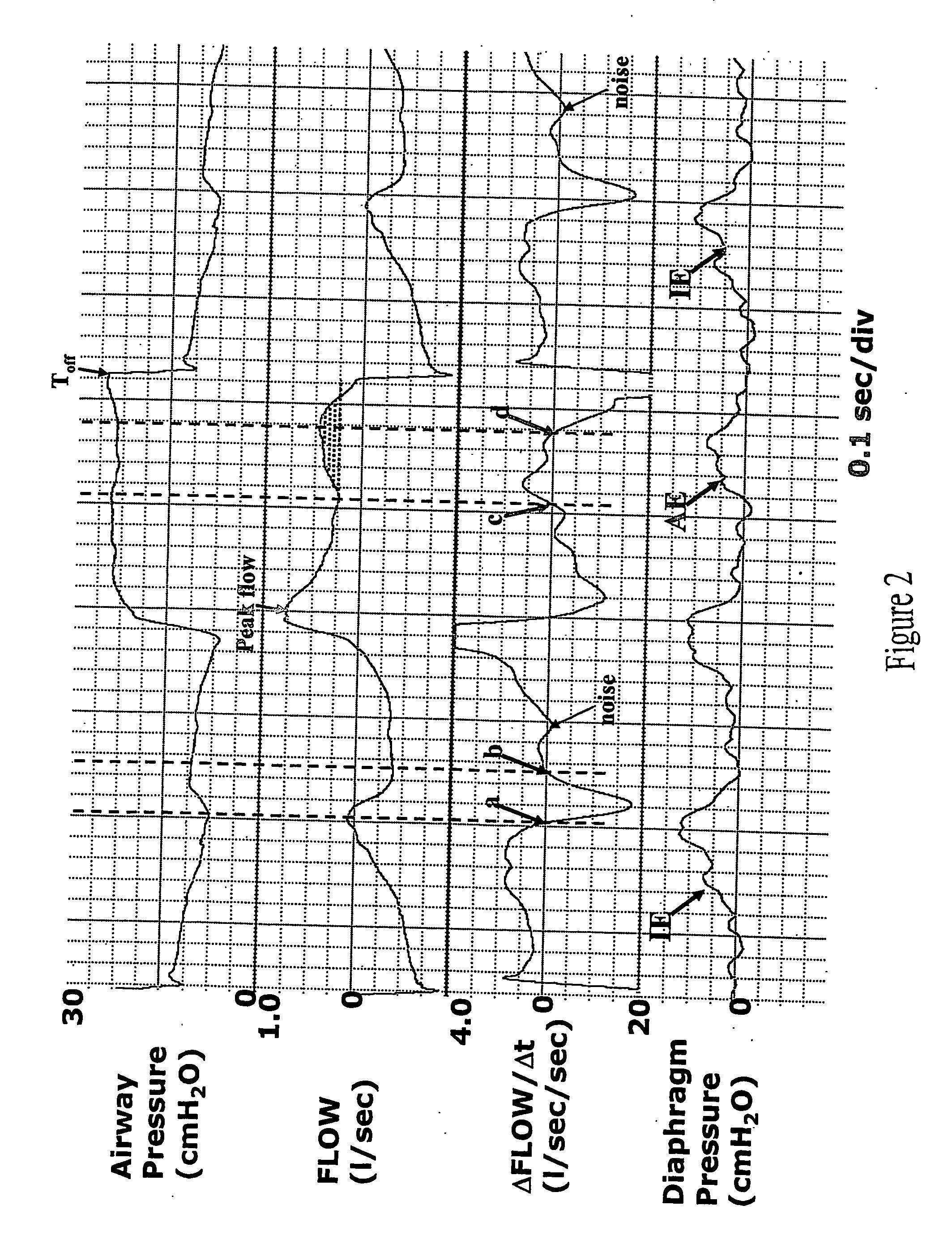Synchrony between end of ventilator cycles and end of a patient efforts during assisted ventilation
a technology of assisted ventilation and ventilator cycle, which is applied in the direction of diagnostics, medical devices, sensors, etc., can solve the problems of many patient cycle ineffective triggering of ventilator cycle, inability to ensure the end of ventilator cycle, and excessive sedation and sleep disruption
- Summary
- Abstract
- Description
- Claims
- Application Information
AI Technical Summary
Problems solved by technology
Method used
Image
Examples
Embodiment Construction
[0018] A digital implementation of a preferred embodiment of the invention will be described here (FIG. 3) because the method of the invention is primarily intended for incorporation in microprocessor-based ventilators. As such, the method can be installed in a free-standing microprocessor that interacts with the ventilator's control circuitry or may be fully incorporated in the ventilator's resident computer. It is recognized, however, that most of the functions described here can be implemented using standard analog circuits.
[0019] The basic hardware requirements (microprocessor, 1) are a Central Processing Unit (CPU, 2), Random Access Memory (RAM, 3) and Read Only Memory (ROM, (4)).
[0020] A. Inputs:
[0021] It is assumed here that inputs are in digital form. If some or all are available only in analog form, an analog to digital converter (not shown) must be installed upstream from the CPU to receive and digitize the analog inputs.
[0022] Inputs may vary depending on user prefere...
PUM
 Login to View More
Login to View More Abstract
Description
Claims
Application Information
 Login to View More
Login to View More - R&D
- Intellectual Property
- Life Sciences
- Materials
- Tech Scout
- Unparalleled Data Quality
- Higher Quality Content
- 60% Fewer Hallucinations
Browse by: Latest US Patents, China's latest patents, Technical Efficacy Thesaurus, Application Domain, Technology Topic, Popular Technical Reports.
© 2025 PatSnap. All rights reserved.Legal|Privacy policy|Modern Slavery Act Transparency Statement|Sitemap|About US| Contact US: help@patsnap.com



